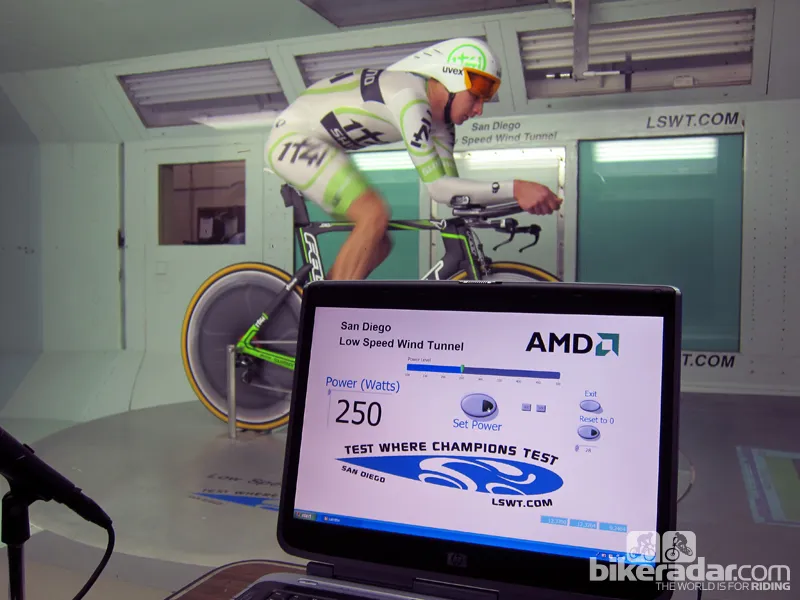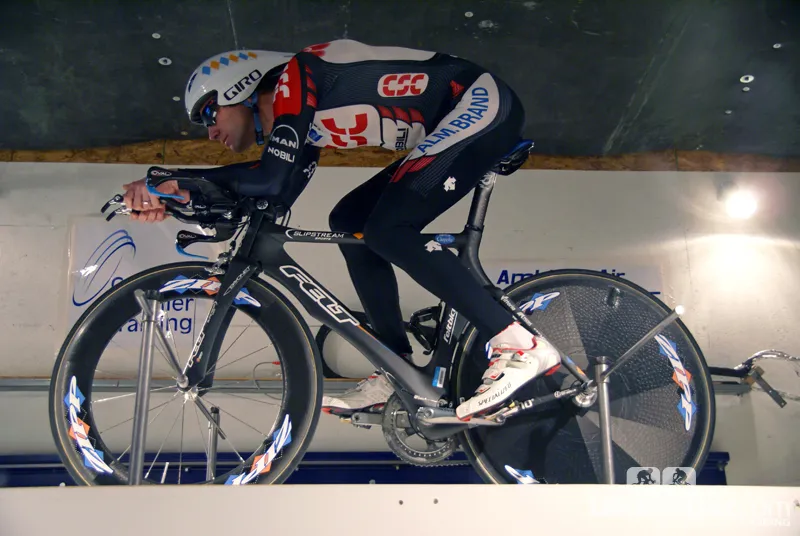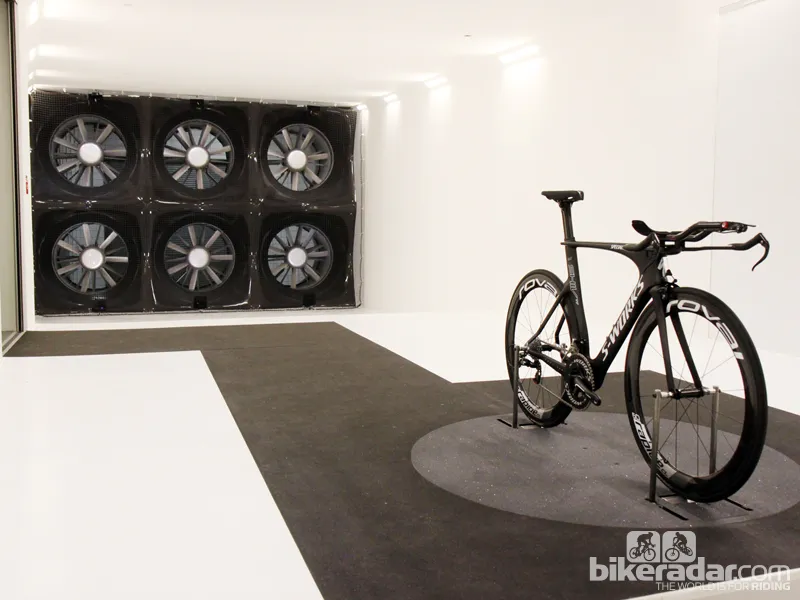Cycling companies are bombarding us with a veritable rat's nest of claimed aero savings. This frame saves you 50 seconds, these wheels save you three minutes, and on and on. Add them all up and it seems like you could arrive at your destination before you leave. But how reliable are these numbers, and are they even helpful?
This AngryAsian rant isn't an attack on aero gear in general. Aerodynamics absolutely does matter when riding a bike, even when you can't actually feel it. In fact, save for steeper climbs and slower speeds, drag is usually the biggest impediment to your forward progress. The question is how much advantage you can gain and whether it's worthwhile to you in terms of financial costs and other potential compromises.
One can only make that decision when armed with the proper information. It'd be easy to make a choice if everyone's claims were comparable, but unfortunately that's not the case.
Wind tunnel testing is a precise science and like any study, there are initial conditions put in place to set the stage. Every manufacturer claim is tied to such a specific collection of conditions that it can feel like they don't have any real world applicability.
Take aero wheels for example. What tires were used? Did the company test one wheel or a pair? Were they attached to a bike? Which bike model and what size? Was there a mannequin on board? What was the mannequin shaped like? Was the mannequin moving? Was the testing done at various yaw angles and speeds? What yaw angle and speed is associated with the published claims? At which wind tunnel was the testing conducted?
"Different wheels perform differently with different bikes," says our resident BikeRadar time trial gear guru (and global editor in chief) Jeff Jones, who also happens to be a former 12-hour TT record holder and a regular winner of UK time trials. "Wheels should be tested on different styles of bikes to see what effects things like the gap between the wheel and the down tube has on drag and stability. That's a lot of data but to be fair you need the full picture."

Wind tunnel testing isn't cheap. But unless you're able to somehow test your own personal setup there's no guarantee that you'll get the advantages some manufacturers claim
Match up all of the associated conditions just right and there's a good chance you'll be able to reproduce manufacturers' claimed figures (much as aero testing is rife with conditions, we're less inclined to believe most companies are flat-out lying). Stray outside of those narrow parameters, however, and your guess is as good as mine in regards to how the results will end up. The list of variables is practically endless, particularly when you consider the growing arsenal of so-called aero gear on the market: wheels, frames, tires, handlebars, helmets, seatposts, clothing, pedals, brakes, cranks – you name it.
"There are many ways of presenting data to the consumer, and everyone has good reason for choosing their methodology, but I agree that we are all different and that makes it confusing," said bicycle aerodynamics guru Simon Smart, who has worked with Giant Bicycles, Scott Bicycles and ENVE wheels.
Even if one were to do a head-to-head shootout (same tunnel, same testing parameters), it still only provides somewhat of a snapshot view of some representative setup that might not accurately represent you.
Then there's the matter of whether or not a so-called 'fast' bike will ultimately make you a fast rider. Your body still represents the vast majority of total drag so if you can't adopt a fast position on a fast bike – or if you can't maintain power output in an aerodynamically fast position – the end result will be a relatively slow rider who just wasted a heap of cash.
"A huge confounder is how adjustable the bike is," Jones says. "This is worth more than the relatively small savings that one frame will give you over another. If you can't move the cockpit around then potentially you'll end up with a slower position on a faster bike [with the] net result being that you're slower. Some bikes (like the Canyon Speed Concept) give you lots of adjustment, and this is a big plus."

Wind tunnel testing is notoriously conditional. Even though just one component might be the focus, there are still countless other variables to consider
So what's the well-heeled and aero-hungry cyclist to do? If you're reliant on manufacturer claims (or in rare cases, independent tests), I'd first recommend going for the big gains (like deeper-section aero wheels over box-section rims, for example), which are more likely to deliver some benefit even with differences in test setups. Once you get into the realm of smaller benefits, you're increasing the possibility that testing variances would overshadow those lesser gains and that your new purchase won't actually gain you anything.
The ideal scenario would be to test the items in question on your setup in one of the various wind tunnels that have opened up in recent years that specifically cater to consumers, such as FASTER in Scottsdale, Arizona and A2 in Mooresville, North Carolina just to name a couple. You'd also want to test under a variety of conditions (wind speeds, angles, positions) to get the best overall view.
Alternatively, you could also head to a velodrome (preferably indoors) with a power meter and do your best to draw some correlations between wattages, lap times and equipment. In Los Angeles, ERO Sports offers real-time drag analysis where you can test whatever position and/or gear you like.
Not to be overlooked is your own body. Like it or not, you still present the most surface area and drag of the rider-plus-bike system. It's there where you stand to make the most drag-per-dollar gains so consider optimizing your position before you do anything else.
Are any of these options cheap or easy? Sadly, no. But then again, extra speed – whether through training, testing, or equipment – comes with some sort of 'cost' no matter the origin. Regardless of the approach, it's best to make sure your investment is well spent.
James Huang has been writing about bicycle tech since 2005 but also has more than 14 years of experience as a shop mechanic. In that time he's seen plenty of fantastic gear and technology but also a lot of things that just flat-out piss him off. Follow the 'AngryAsian' on Twitter at @angryasian.


